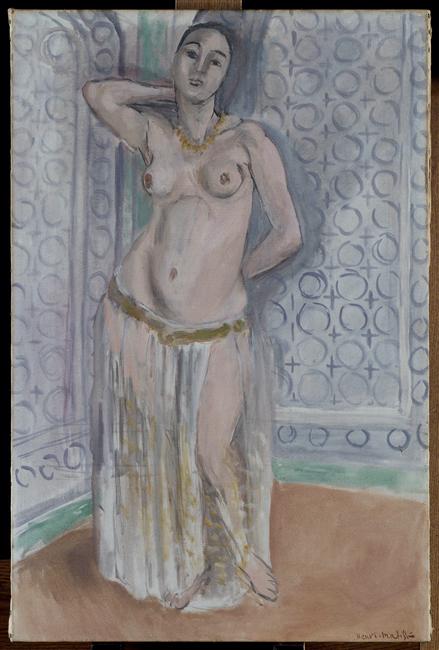art-Matisse.com
Henri Matisse 1869-1954
©Henri Matisse - Odalisque in blue or white slave 1922
 Odalisque in blue or white slave |
From Musée de l'Orangerie, Paris:
"When Matisse died, he left me his odalisques as a legacy" confided Picasso to Roland Penrose after the master's death. This shows the importance that he bestowed to this series of works painted in Nice in the 1920s. Matisse took up a great iconographic tradition of the 19th century, which was marvellously illustrated by Ingres and Delacroix. The theme awakened the "happy nostalgia" in him for the time he spent in Algeria, Morocco or Seville.
The odalisque theme was a pretext for Matisse to "paint the nude". What the painter was looking for is the integration of a model's body and shadow in an ornamental decor that affirms the flatness of the painting. The odalisque allowed him to integrate Islamic decorative art, which he greatly admired, into his compositions, especially starting with the exhibition in Munich of 1910.
Matisse arranged a corner of his flat for staging his models: a platform, fixtures for hanging textiles, a screen. Most often only a few signs are necessary to bring the Orient to mind: a sirwal, bracelets.
In this painting the decor is reduced to a Moorish screen, a veritable character in the Nice period paintings that can be seen in Odalisque à culotte rouge [Odalisque in Red Culottes]. The model is enclosed within a restricted space. The pose with the arm raised, which was frequently used in the odalisque series, emphasises the curves of the chest. The composition is painted in blue tones and in a fluid manner that brings watercolours to mind.